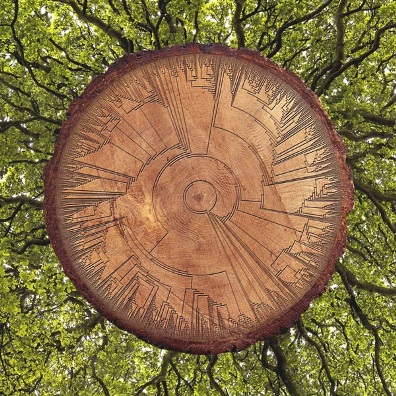Fungi
Millions of Fungi
Every living thing is crawling with microorganisms — and you need them to survive
Mycologist tales ...
Throughout Tibet, Micronesia, on Borneo, and on São Tomé and Príncipe (tiny islands off the coast of West Africa), Perry has surveyed “hotspots,” or regions with high levels of endemic, endangered plants and wildlife.
According to Conservation International, there are 35 total hotspots in the world that comprise just 2.3 percent of Earth’s landmass, yet these regions hold more than half of species that can’t be found anywhere else.
The annual http://www.esf.edu/species/mission.htm Most Exciting New Discoveries list by the International Institute for Species Exploration...
The International Institute for Species Exploration seeks to increase awareness of the biodiversity crisis and an appreciation for the importance of taxonomy, natural history, and collections in the exploration and conservation of animals, plants, and microbes.
Although about 18,000 species are discovered and named each year, we are losing ground. Species are disappearing at least as rapidly and unless we collect and describe them, evidence that they ever existed and all that we might have learned from them will be gone.
In the Hawaiian archipelago — the most isolated island chain in the world — more than 90 percent of plants are unique to their environment, and nearly 30 percent are threatened and/or endangered according to the state’s Division of Forestry and Wildlife.
“We’re collecting the baseline data,” Professor Perry says. “We’re surveying the diversity of organisms and determining what’s there. In all these places, we’re saying, ‘No one’s ever been to this place and done a full documentation of the fungal biodiversity that’s here.’ That’s the starting point.”
“With the endophyte project, we’re talking about big evolutionary questions,” Perry explains. “When we look at endophytes that are living in native plants, we want to know: Did they co-evolve with their host plants? Did they go through adaptive radiation (rapid evolutionary diversification of an organism)? Where did they come from?”
Mushrooms today, Mushrooms tomorrow
Microbial Boom
The Unseen and the Seen
The 8 Million Species We Don’t Know
By Edward O. Wilson
March 3, 2018 / New York Times
https://www.nytimes.com/2018/03/03/opinion/sunday/species-conservation-extinction.html
The most striking fact about the living environment may be how little we know about it. Even the number of living species can be only roughly calculated. A widely accepted estimate by scientists puts the number at about 10 million. In contrast, those formally described, classified and given two-part Latinized names (Homo sapiens for humans, for example) number slightly more than two million. With only about 20 percent of its species known and 80 percent undiscovered, it is fair to call Earth a little-known planet.
- To effectively manage protected habitats, we must also learn more about all the species of our planet and their interactions within ecosystems.
The best-explored groups of organisms are the vertebrates (mammals, birds, reptiles, amphibians, fishes), along with plants, especially trees and shrubs. Being conspicuous, they are what we familiarly call “wildlife.” A great majority of other species, however, are by far also the most abundant. I like to call them “the little things that run the world.” They teem everywhere, in great number and variety in and on all plants, throughout the soil at our feet and in the air around us. They are the protists, fungi, insects, crustaceans, spiders, pauropods, centipedes, mites, nematodes and legions of others whose scientific names are seldom heard by the bulk of humanity. In the sea and along its shores swarm organisms of the other living world — marine diatoms, crustaceans, ascidians, sea hares, priapulids, coral, loriciferans and on through the still mostly unfilled encyclopedia of life.
Do not call these organisms “bugs” or “critters.” They too are wildlife. Let us learn their correct names and care about their safety. Their existence makes possible our own. We are wholly dependent on them.
·······························
